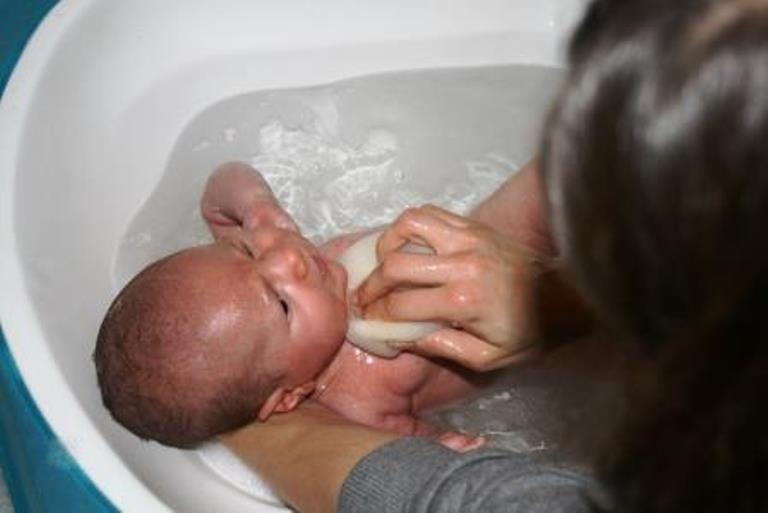Newborn babies don’t need a bath every day – two or three times a week is fine. In between, keep your baby clean by ‘topping and tailing’.
Babies are born with a sensitive skin so avoid using perfumed soaps and other bath products which may lead to skin irritation. In the same way, baby wipes can sometimes irritate newborn skin. Just using cooled boiled water is fine.
Wrap your baby in a warm towel on a changing mat, and clean around their face and neck using cotton wool pads or reusable wipes/flannels. You can keep their nappy on for now. Using a clean piece of cotton wool for each eye, wipe from the inside outwards. Talk to your health visiting team or your GP if your baby’s eyes look red or sticky.
Now take off your baby’s nappy, and using more cotton wool pads or reusable wipes/flannels dipped in water, clean their bottom and around their genitals. With boys, there’s no need to pull the foreskin back. With baby girls, remember to wipe from front to back to reduce the risk of infection. Don’t worry if there’s some discharge from the vagina – it’s completely normal in newborns.
You don’t have to do anything special to clean your baby’s umbilical cord if it’s still attached. It might become a bit smelly while it breaks away, but that’s completely normal. However, if the skin around the cord looks red or inflamed, get some advice from your health visiting team or your GP.
Smile at your baby while you’re doing all this, and talk or sing to them. This will soothe and reassure them.


